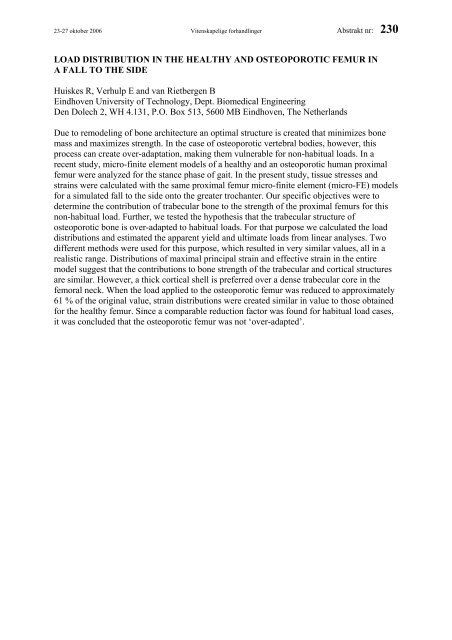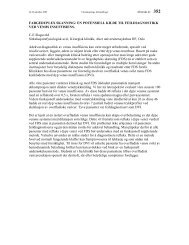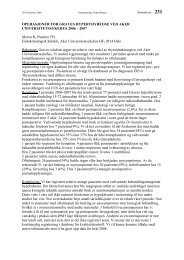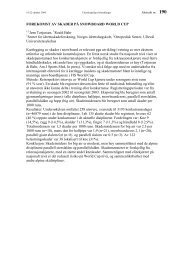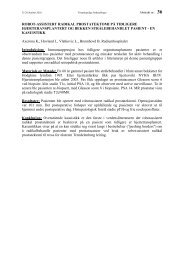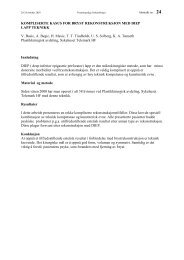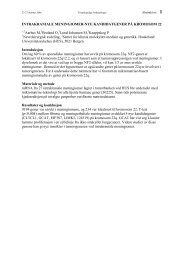Ortopedi
Ortopedi
Ortopedi
Create successful ePaper yourself
Turn your PDF publications into a flip-book with our unique Google optimized e-Paper software.
23-27 oktober 2006 Vitenskapelige forhandlinger Abstrakt nr: 230<br />
LOAD DISTRIBUTION IN THE HEALTHY AND OSTEOPOROTIC FEMUR IN<br />
A FALL TO THE SIDE<br />
Huiskes R, Verhulp E and van Rietbergen B<br />
Eindhoven University of Technology, Dept. Biomedical Engineering<br />
Den Dolech 2, WH 4.131, P.O. Box 513, 5600 MB Eindhoven, The Netherlands<br />
Due to remodeling of bone architecture an optimal structure is created that minimizes bone<br />
mass and maximizes strength. In the case of osteoporotic vertebral bodies, however, this<br />
process can create over-adaptation, making them vulnerable for non-habitual loads. In a<br />
recent study, micro-finite element models of a healthy and an osteoporotic human proximal<br />
femur were analyzed for the stance phase of gait. In the present study, tissue stresses and<br />
strains were calculated with the same proximal femur micro-finite element (micro-FE) models<br />
for a simulated fall to the side onto the greater trochanter. Our specific objectives were to<br />
determine the contribution of trabecular bone to the strength of the proximal femurs for this<br />
non-habitual load. Further, we tested the hypothesis that the trabecular structure of<br />
osteoporotic bone is over-adapted to habitual loads. For that purpose we calculated the load<br />
distributions and estimated the apparent yield and ultimate loads from linear analyses. Two<br />
different methods were used for this purpose, which resulted in very similar values, all in a<br />
realistic range. Distributions of maximal principal strain and effective strain in the entire<br />
model suggest that the contributions to bone strength of the trabecular and cortical structures<br />
are similar. However, a thick cortical shell is preferred over a dense trabecular core in the<br />
femoral neck. When the load applied to the osteoporotic femur was reduced to approximately<br />
61 % of the original value, strain distributions were created similar in value to those obtained<br />
for the healthy femur. Since a comparable reduction factor was found for habitual load cases,<br />
it was concluded that the osteoporotic femur was not ‘over-adapted’.


